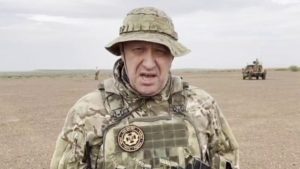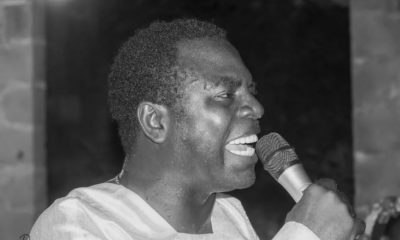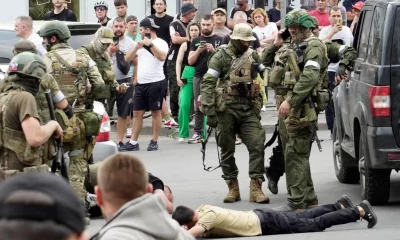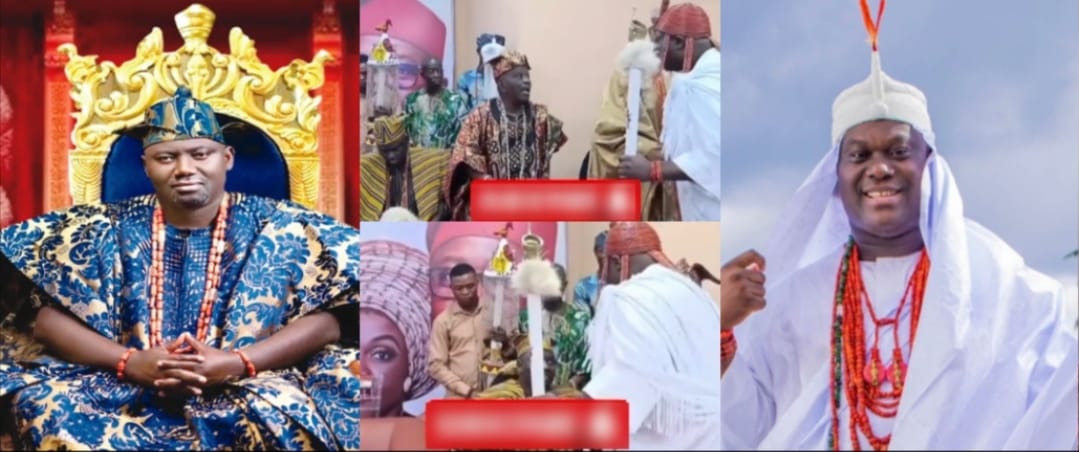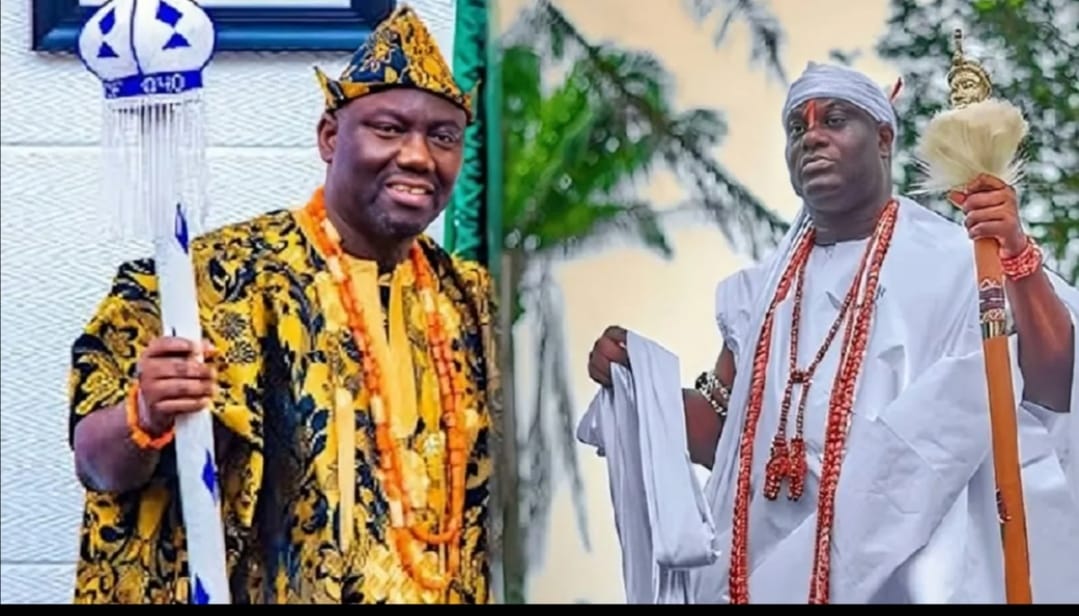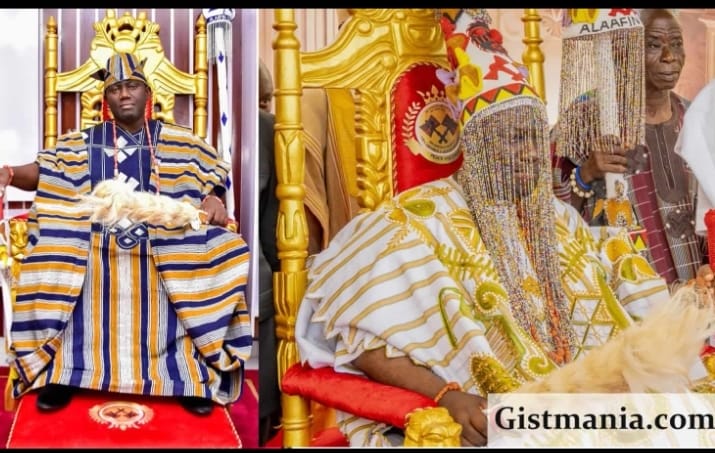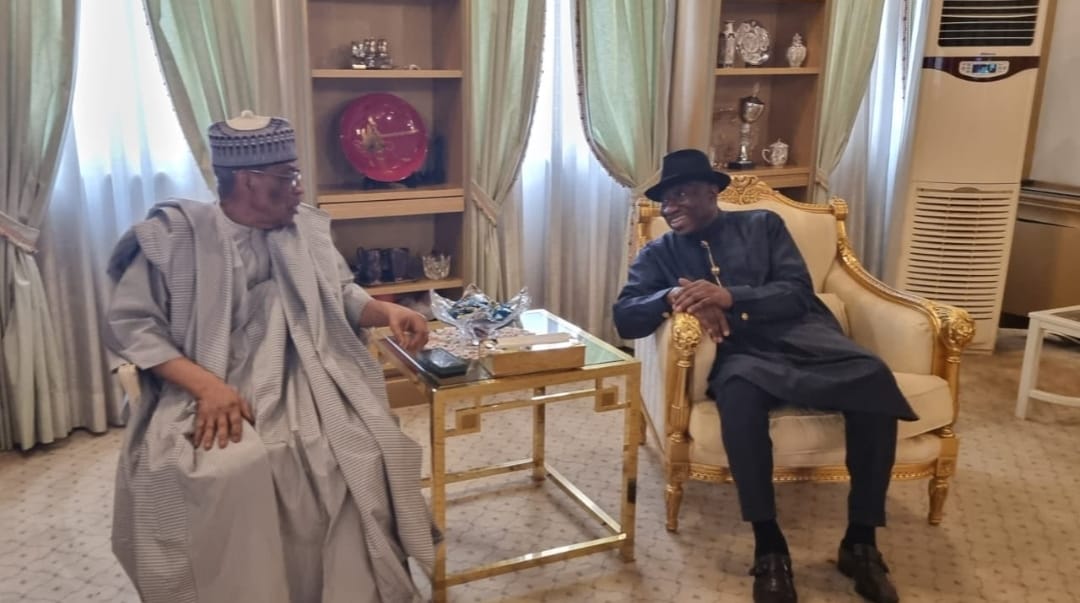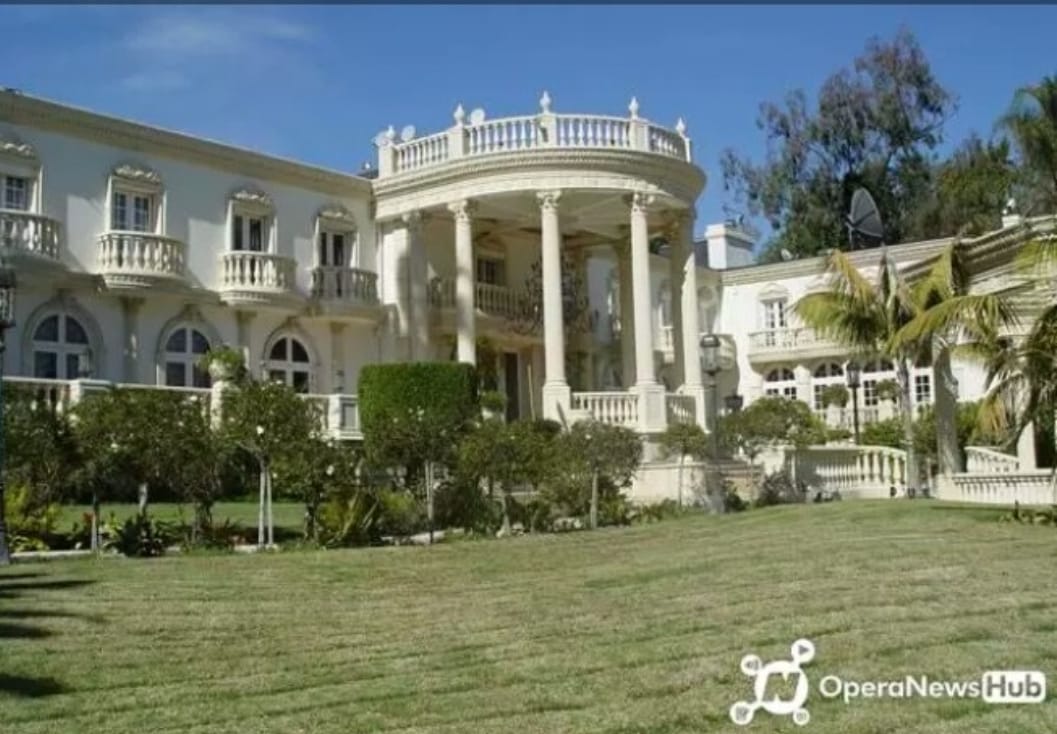celebrity radar - gossips
What could have caused the plane crash that reportedly killed Wagner Warlord Yevgeny Prigozhin?
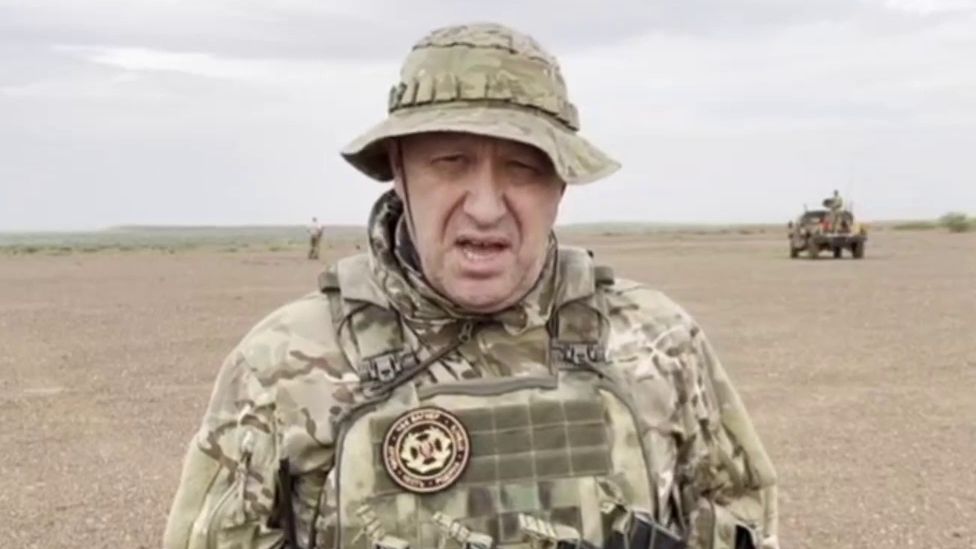
What could have caused the plane crash that reportedly killed Wagner warlord Yevgeny Prigozhin?
Wagner warlord Yevgeny Prigozhin, who led a failed uprising against the Kremlin exactly two months ago, was on board a plane that crashed on Wednesday, according to Russian officials – raising questions as to exactly how the disaster occurred.
The crash took place northwest of Moscow and killed all on board, said Russia’s aviation agency, including Prigozhin, chief of the mercenary group that gained prominence for its brutal methods worldwide and its battleground victories in the Ukraine war.
Here’s what we know so far.
What happened?
The plane was a private Embraer jet carrying seven passengers and three crew members, according to Russia’s emergency services ministry.
It had departed from Moscow and was en route to St. Petersburg when it crashed near the village of Kuzhenkino, in Russia’s western Tver region, Russian officials said. Flight data shows the plane reached an altitude of some 28,000 feet before it suddenly stopped transmitting tracking details.
The bodies of eight people have been found at the crash site, according to Russian state media. The official state news agency TASS reported the plane “burned up” on impact. It had been in the air for about half an hour.
Video published by Russian state media outlet RIA Novosti showed a plane plummeting with one wing missing. CNN is unable to confirm the authenticity of the video, but RIA Novosti claimed it was the moment that an Embraer jet fell from the sky over the Tver region.
It’s not yet clear what caused the plane to crash. Russian authorities said they are investigating and conducting search operations.
“It’s coming down quickly in a spin, and it’s trailing a lot of smoke. So, this is an aircraft that was on fire. And it looks like some structural pieces, aerodynamic surfaces, were missing,” veteran science and aerospace reporter Miles O’Brien told CNN after reviewing footage of the plane’s fall.
“An aircraft like this … they just don’t catastrophically drop out of the sky without something very unusual happening,” he added.
It could be caused by an explosion either inside or outside the aircraft, O’Brien added – like an explosive going off on board, or the aircraft being hit by a missile.
David Soucie, a former safety inspector with the US Federal Aviation Administration, echoed this possibility, saying the plane’s fall looked like it had only one wing left.
Was Prigozhin on board?
Prigozhin and several top Wagner lieutenants were named on a list of passengers shared by Russia’s aviation agency.
A Telegram channel linked to Wagner, which had previously carried the group’s propaganda videos, also issued a statement saying Prigozhin had been killed. CNN is unable to confirm the claim.
Other channels associated with Prigozhin and Wagner, including his official Telegram channel, have remained silent.
But there are other clues linking the warlord and the crash.
Another video released by RIA Novosti purports to show the crash site, where the last four digits of a registration number are visible on the plane engine debris: 2795. Prigozhin’s own plane, linked to his companies and the Wagner group, is registered as RA-02795.
Was this payback?
The crash comes exactly two months to the day after Prigozhin’s attempted mutiny against Russia’s military leadership.
Prigozhin and his Wagner troops had seized key military sites and marched toward Moscow, where the Kremlin had deployed heavily armed troops to the streets. But before they could face off, a deal was struck that ended the rebellion and sent Prigozhin and his fighters to neighboring Belarus.
It marked the biggest challenge to Russian President Vladimir Putin’s rule in 23 years. But it also painted a target on Prigozhin’s back, with some experts speculating the warlord was a dead man walking.
Even US President Joe Biden suggested on Wednesday that Putin may have been involved in the crash. “I don’t know for a fact what happened, but I’m not surprised,” he said.
CIA Director Bill Burns and Secretary of State Antony Blinken have made similar comments, pointing out Putin’s long history of payback and the frequency with which Russian critics or dissidents die in mysterious circumstances.
Bill Browder, a Putin critic and formerly the largest foreign investor in Russia before he was expelled from the country, said he was surprised Prigozhin survived for as long as he did after the rebellion. Other Wagner leaders and Prigozhin allies may now be either on the run or in hiding, he said.
What’s the public reaction so far?
Prigozhin and Wagner have their share of supporters among the Russian public – which was evident during the failed insurrection. In cities briefly occupied by Wagner, videos showed residents cheering them on, taking pictures with fighters, and flagging down Prigozhin’s car just to shake his hand.
On Wednesday night, people gathered in St. Petersburg to leave tributes for Prigozhin such as flowers, candles and Wagner chevron patches. Video showemd members of the public unfurling a large banner outside Wagner’s headquarters that read, “Wagner PMC. We are together.”
Photos show a range of people mourning at the site, including young men, couples and teenagers; some are clearly distressed, embracing each other.
The news is likely to meet a far different reaction in Ukraine. Wagner forces were heavily involved in taking several Ukrainian towns early this year, delivering tangible progress for the Russian side – but often at the expense of sending waves of mercenaries into what Prigozhin called “the meat grinder”.
“There will be no tears shed here at all, if indeed he has died,” said CNN’s Chief International Security Correspondent Nick Paton Walsh, currently based in Ukraine. He added that one Ukrainian soldier on the front lines had already texted him Wednesday to celebrate the news.
celebrity radar - gossips
Royal Rivalry Reloaded? Alaafin~Ooni “WAR” Tests History, LAW and Yoruba UNITY
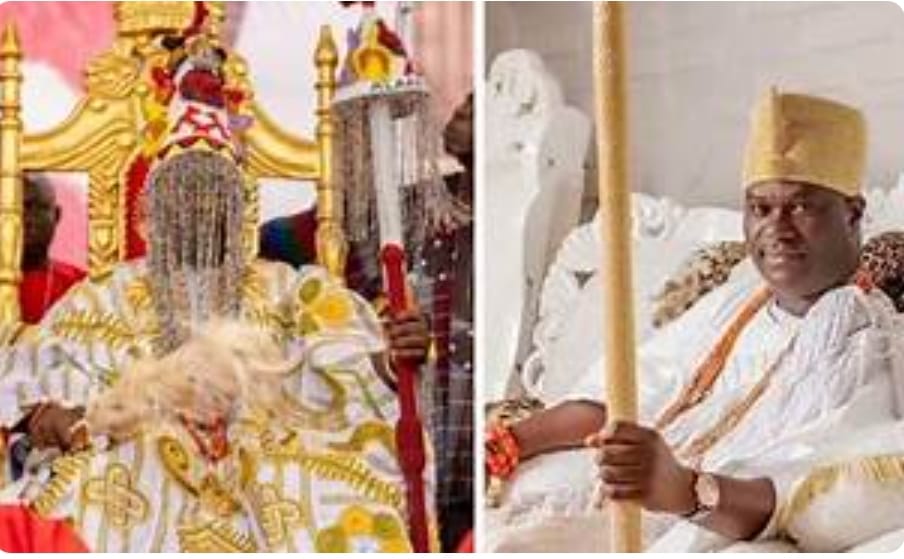
Royal Rivalry Reloaded? Alaafin~Ooni “WAR” Tests History, LAW and Yoruba UNITY.
By George Omagbemi Sylvester | SaharaWeeklyNG.com
There is a rumble in Yorubaland again. Headlines scream of a “ROYAL WAR” between two of the most storied thrones in West Africa (the Alaafin of Oyo and the Ooni of Ife) after the Ooni of Ife reportedly conferred the Yoruba-wide chieftaincy title Okanlomo of Yorubaland on an Ibadan industrialist, Chief Dotun Sanusi. In response, the newly crowned Alaafin of Oyo, Oba Abimbola Akeem Owoade I, issued a 48-hour ultimatum demanding the title be revoked, arguing that only the Alaafin can grant distinctions that purport to cover all Yorubaland.
Before we turn emotion into enmity, let’s interrogate facts, history and law.
What actually happened?
Between 18–21 August 2025, multiple reputable outlets reported a sharp exchange. The Alaafin, through his media office, asserted that the Ooni had overstepped his authority and cited a Supreme Court position (which he vowed to publish) as backing for the claim that Yoruba-wide titles fall under the Alaafin’s exclusive remit. The Ooni’s camp has publicly downplayed talk of a supremacy battle, while civic and cultural voices urged calm.
This is not happening in a vacuum. The Alaafin’s stool has only recently stabilized: Oba Owoade received his staff of office in January 2025 and was crowned on April 5, 2025, after a rancorous succession interregnum. The Ooni, Oba Adeyeye Enitan Ogunwusi, Ojaja II, has been on the throne since 2015 and is globally visible as a cultural symbol.
The long shadow of history.
The Ooni of Ife and the Alaafin of Oyo embody two different but intertwined strands of Yoruba civilization:
Ile-Ife is the spiritual cradle; the site of origin in Yoruba cosmogony and the fountain of sacral authority. Historians from Samuel Johnson to modern scholars consistently frame Ife as the primordial center of Yoruba identity. (Johnson’s classic History of the Yorubas remains foundational.)
Oyo, particularly from the 16th to 19th centuries, was the political-military juggernaut of the western Sudan, a cavalry empire studied by historians such as Robin Law. The Alaafin became synonymous with statecraft, external relations and the adjudication of inter-polity protocols.
Those parallel lineages bred periodic rivalry over status and scope, compounded by colonial-era re-engineering of “TRADITIONAL COUNCILS” and post-1991 state creation (when Osun State was carved from Oyo, relocating Ife to a different administrative orbit). The effect: jurisdictional fog where customary breadth meets modern legal borders—exactly the fault line today’s dispute treads.
Unity is not a myth; there was a reset.
It would be historically dishonest to paint the relationship as perpetual warfare. In January 2016, just weeks after his coronation, Ooni Ogunwusi paid a historic visit to the late Alaafin Lamidi Adeyemi III in Oyo (the first by an Ooni since 1937) in what was widely celebrated as the breaking of a “79-year jinx.” The Ooni declared then: “My mission here is to preach peace among nations of Yoruba both home and abroad.” The Alaafin publicly reciprocated, calling for unity. The symbolism was not cheap theatre; it energized a season of rapprochement.
That 2016 reset is a vital baseline: Yoruba unity is possible when egos bow to heritage.
The law: who can bestow “Yorubaland” titles?
The Alaafin’s media office now cites a Supreme Court pronouncement allegedly limiting Yoruba-wide titles to the Oyo monarchy and confining the Ooni’s writ to his local jurisdictions in Osun State. As of press time, independent legal texts and the specific judgment have not been exhibited publicly, though the Alaafin has hinted at publishing the ruling. Conversely, some commentary questions any absolute reading that one throne “EXCLUSIVELY” controls pan-Yoruba dignities. In short: claims exist on both sides; the documentary proof is awaited. Facts (not folklore) must decide.
Two things can be true at once:
Customary memory often accords the Alaafin a coordinating role in Yoruba-wide protocols; and
The Ooni’s primacy as Arole Oduduwa (heir and standard-bearer of the progenitor) carries trans-local spiritual cachet that many communities recognize.
Only a clear, cited court judgment or a negotiated inter-throne compact can settle the overlap where sacred preeminence meets political hegemony.
Why this “royal war” framing is dangerous.
The language of “WAR” is gasoline on dry grass. Yorubaland faces REAL-WORLD CHALLENGES, SECURITY DEFICITS, YOUTH UNEMPLOYMENT, CULTURAL EROSION. Turning a title dispute into a civilizational crack-up is elite negligence. As Aare Gani Adams (Aare Ona Kakanfo of Yorubaland) cautioned amid this flare-up, the region “can’t afford to be divided.” Leadership requires de-escalation, not victory laps.
From a governance perspective, supremacy theatre distracts from institution-building: codifying jurisdiction, harmonizing chieftaincy protocols and safeguarding cultural diplomacy that brings investment, tourism and respect. From a historical perspective, it trivializes centuries of statecraft and spirituality by reducing them to soundbites.
The path out: six concrete steps.
Publish the Judgment: If there is a determinative Supreme Court ruling, release it; full text, citation, ratio decidendi. Let lawyers and historians test it in daylight. Ambiguity breeds rumor.
Set Up a Royal Protocols Commission: A joint Alaafin–Ooni panel with eminent historians (e.g., Yoruba studies scholars), jurists and culture custodians; should draft a Memorandum on Pan-Yoruba Titles: definitions, limits, consultative triggers and recognition guidelines.
Adopt Mutual Notification: Any proposed. Yorubaland-wide title by either palace should trigger a formal prior-notice and no-objection window for the other.
Historicize, Don’t Weaponize: Commission a scholarly white paper (drawing on Johnson’s History of the Yorubas and modern research on Oyo/Ifẹ̀) to map ancient precedence to contemporary practice, so that tradition informs law, not vice versa.
Speak Once, Calmly: Designate one spokesperson per palace. Mixed messaging feeds social-media gladiators and lowers the stature of both stools.
Stage a Public Re-Embrace: Replicate 2016; a joint public appearance, a short communique using the Ooni’s own 2016 register of “PEACE” and the late Alaafin’s “UNITY” language. Symbols matter.
Intellectual weight: what the scholars teach.
On Ife’s sacral primacy: Nineteenth-century chronicler Samuel Johnson framed Ile-Ife as the cradle of Yoruba civilization, a point echoed across modern Yoruba studies. This does not mechanically translate into administrative supremacy but explains why Ife’s voice carries across sub-ethnic lines.
On Oyo’s political centrality: Histories of the Oyo Empire emphasize its institutional sophistication (checks on royal power, provincial administration and diplomatic precedence) factors that created expectations of arbiter-like roles for the Alaafin.
Takeaway: Spiritual primacy and political centrality are not mutually exclusive; they are complementary pillars. Mature civilizations build mechanisms to let both breathe.
Fact-check corner (so no stone is left unturned)
Did the Ooni confer a Yoruba-wide title on Chief Dotun Sanusi in August 2025?
Yes—credible outlets reported the Ooni conferred Okanlomo of Yorubaland on Sanusi, prompting the Alaafin’s ultimatum.
Is there a published Supreme Court judgment giving the Alaafin exclusive rights over Yoruba-wide titles?
Not yet publicly exhibited. The Alaafin has referenced such a ruling and indicated an intention to publish it; until it is produced and scrutinized, this remains an assertion rather than a verified legal constraint.
Are the thrones historically locked in permanent enmity?
No. The 2016 reconciliation was a watershed (first Ooni visit since 1937) with explicit peace rhetoric from both sides.
Who occupies the thrones today?
Ooni: Oba Adeyeye Enitan Ogunwusi (since 2015). Alaafin: Oba Abimbola Akeem Owoade I (staff of office January 2025; crowned April 5, 2025).
Yorubaland’s greatness was never built on “WINNER-TAKES-ALL” posturing. It was built on the hard weave of sacred legitimacy and statecraft capacity; Ife and Oyo in dynamic tension, not destructive rivalry. The 2016 embrace proved that dignity does not diminish by sharing space. It expands.
Today, the adult thing (the royal thing) is simple: produce the judgment, codify shared protocols and re-enact that embrace. There is more honor in co-guarding a heritage than in “OWNING” it. Royalty is not a megaphone; it is a mirror. Let it reflect the best of the Yoruba nation.
© SaharaWeeklyNG.com. All rights reserved.
celebrity radar - gossips
Why Babangida’s Hilltop Home Became Nigeria’s Political “Mecca”

Why Babangida’s Hilltop Home Became Nigeria’s Political “Mecca”.
By George Omagbemi Sylvester | Published by SaharaWeeklyNG.com
Former President Goodluck Jonathan’s birthday visit to Gen. Ibrahim Badamasi Babangida (IBB) in Minna (where he hailed the octogenarian as a patriotic leader committed to national unity) was more than a courtesy call. It was a reminder of a peculiar constant in Nigerian politics: the steady pilgrimage of power-seekers, bridge-builders and crisis-managers to the Hilltop mansion. Jonathan’s own words captured it bluntly: IBB’s residence “is like a Mecca of sorts” because of the former military president’s enduring relevance and perceived nation-first posture.
Babangida turned 84 on 17 August 2025. That alone invites reflection on a career that has shaped Nigeria’s political architecture for four decades; admired by some for audacious statecraft, condemned by others for controversies that still shadow the republic. Born on 17 August 1941 in Minna, he ruled as military president from 1985 to 1993, presiding over transformative and turbulent chapters: the relocation of the national capital to Abuja in 1991; the creation of political institutions for a long, complex transition; economic liberalisation that cut both ways; and the fateful annulment of the 12 June 1993 election. Each of these choices helps explain why the Hilltop remains a magnet for Nigerians who need counsel, cover or calibration.
A house built on influence; why the visits never stop.

Let’s start with the obvious: access. Nigeria’s political class prizes proximity to the men and women who can open doors, soften opposition, broker peace and read the hidden currents. In that calculus, IBB’s network is unmatched. He cultivated a reputation for “political engineering,” the reason the press christened him “Maradona” (for deft dribbling through complexity) and “Evil Genius” (for the strategic cunning his critics decried). Whether one embraces or rejects those labels, they reflect a reality: Babangida is still the place where many politicians go to test ideas, seek endorsements or secure introductions. Even the mainstream press has described him as a consultant of sorts to desperate or ambitious politicians, an uncomfortable description that nevertheless underlines his gravitational pull.
Though it isn’t only political tact that draws visitors; it’s statecraft with lasting fingerprints. Moving the seat of government from Lagos to Abuja in December 1991 was not a cosmetic relocation, it re-centred the federation and signaled a symbolic neutrality in a country fractured by regional suspicion. Abuja’s founding logic (GEOGRAPHIC CENTRALITY and ETHNIC NEUTRALITY) continues to stabilise the national imagination. This is part of the reason many leaders, across party lines, still defer to IBB: he didn’t just rule; he rearranged the map of power.
Then there’s the regional dimension. Under his watch, Nigeria led the creation and deployment of ECOMOG in 1990 to staunch Liberia’s bloody civil war, a bold move that announced Abuja as a regional security anchor. The intervention was imperfect, contested and costly, but it helped define West Africa’s collective security posture and Nigeria’s leadership brand. When neighboring states now face crises, the memory of that precedent still echoes in diplomatic corridors and Babangida’s counsel retains currency among those who remember how decisions were made.
Jonathan’s praise and the unity argument.
Jonathan’s tribute (stressing Babangida’s non-sectional outlook and commitment to unity) goes to the heart of the Hilltop mystique. For a multi-ethnic federation straining under distrust, figures who can speak across divides are prized. Jonathan’s point wasn’t nostalgia; it was a live assessment of a man many still call when Nigeria’s seams fray. That’s why the parade to Minna continues: the anxious, the ambitious and the statesmanlike alike seek an elder who can convene rivals and cool temperatures.
The unresolved shadow: June 12 and the ethics of influence.
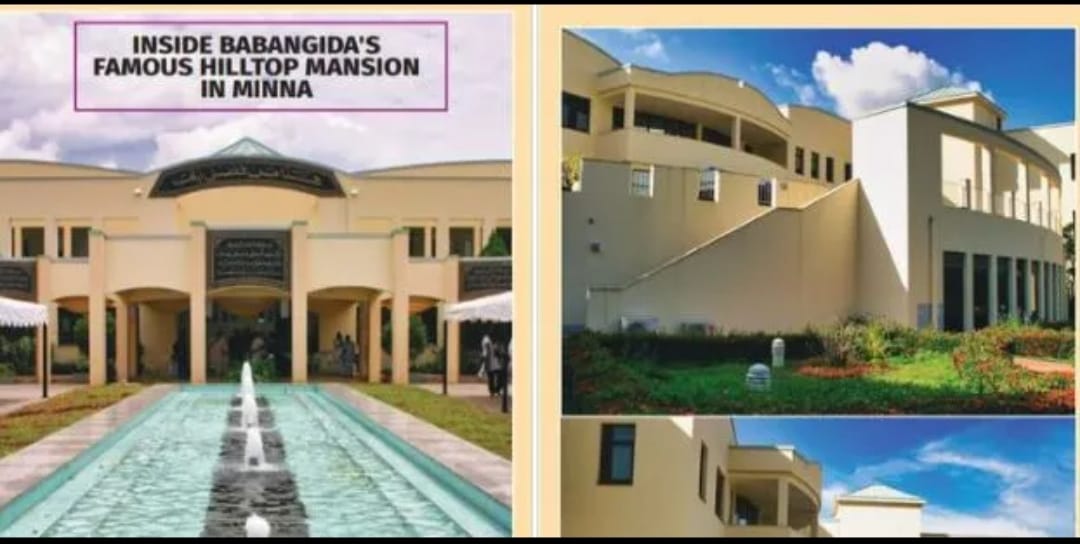
No honest appraisal can skip the hardest chapter: the annulment of the 12 June 1993 election (judged widely as free and fair) was a rupture that delegitimised the transition and scarred Nigeria’s democratic journey. Political scientist Larry Diamond has repeatedly identified June 12 as a prime example of how authoritarian reversals corrode democratic legitimacy and public trust. His larger warning (“few developments are more destructive to the legitimacy of new democracies than blatant and pervasive political corruption”) captures the moral crater that followed the annulment and the years of drift that ensued. Those wounds are part of the Babangida legacy too and they complicate the reverence that a steady stream of visitors displays.
Max Siollun, a leading historian of Nigeria’s military era, has observed (provocatively) that the military’s “greatest contribution” to democracy may have been to rule “long and badly enough” that Nigerians lost appetite for soldiers in power. It’s a stinging line, yet it helps explain the paradox of IBB’s status: the same system he personified taught Nigeria costly lessons that hardened its democratic reflexes. Today’s generation visits the Hilltop not to revive militarism but to harvest hard-won insights about managing a fragile federation.
What sustains the pilgrimage.
1) Institutional memory: Nigeria’s politics often suffers amnesia. Babangida offers a living archive of security crises navigated, regional diplomacy attempted, volatile markets tempered and power-sharing experiments designed. Whether one applauds or condemns specific choices, the muscle memory of governing a complex federation is rare and urgently sought.
2) Convening power: In a season of polarisation, the ability to sit warring factions in the same room is not small capital. Babangida’s imprimatur remains a safe invitation card few refuse it, fewer ignore it. That convening power explains why movements, parties and would-be presidents keep filing up the long driveway. Recent delegations have explicitly cast their courtesy calls in the language of unity, loyalty and patriotism ahead of pivotal elections.
3) Signals to the base: Visiting Minna telegraphs seriousness to party structures and funders. It says: “I have sought counsel where history meets experience.” In Nigeria’s coded political theatre, that signal still matters. Outlets have reported for years that many aspirants treat the Hilltop as an obligatory stop an unflattering reality, perhaps, but a revealing one.
4) The man and the myth: The mansion itself, with its opulence and aura, has become a set piece in Nigeria’s story of power, admired by some, resented by others, but always discussed. The myth feeds the pilgrimage; the pilgrimage feeds the myth.
The balance sheet at 84.
To treat Babangida solely as a sage is to forget the costs of his era; to treat him only as a villain is to ignore the architecture that still holds parts of Nigeria together. Abuja’s relocation stands as a stabilising bet that paid off. ECOMOG, for all its flaws, seeded a habit of regional responsibility. Conversely, June 12 remains a national cautionary tale about elite manipulation, civilian marginalisation and the brittleness of transitions managed from above. These are not contradictory truths; they are the double helix of Babangida’s place in Nigerian memory.
Jonathan’s homage tried to distill the better angel of IBB’s record: MENTORSHIP, BRIDGE-BUILDING and a POSTURE that (at least in his telling) RESISTS SECTIONAL ISM. “That is why today, his house is like a Mecca of sorts,” he said, praying that the GENERAL continues to “mentor the younger ones.” Whether one agrees with the full sentiment, it accurately describes the lived politics of Nigeria today: Minna remains a checkpoint on the road to relevance.
The scholar’s verdict and a citizen’s challenge.
If Diamond warns about legitimacy and Siollun warns about the perils of soldier-politics, what should Nigerians demand from the Hilltop effect? Three things.
First, use influence to open space, not close it. Counsel should tilt toward rules, institutions and credible elections not kingmaking for its own sake. The lesson of 1993 is that subverting a valid vote haunts a nation for decades.
Second, mentor for unity, but insist on accountability. Unity cannot be a euphemism for silence. A truly patriotic elder statesman sets a high bar for conduct and condemns the shortcuts that tempt new actors in old ways. Diamond’s admonition on corruption is not an abstraction; it’s a roadmap for rebuilding trust.
Third, convert nostalgia into institutional memory. If Babangida’s house is a classroom, then Nigeria should capture, publish and debate its lessons in the open: on peace operations (what worked, what failed), on capital relocation (how to plan at scale), and on transitions (how not to repeat 1993). Only then does the pilgrimage serve the republic rather than personalities.
At 84, Ibrahim Babangida remains a paradox that Nigeria cannot ignore: a man whose legacy straddles NATION-BUILDING and NATION-BRUISING, whose doors remain open to those seeking power and those seeking peace. Jonathan’s visit (and his striking “Mecca” metaphor) reveals a simple, stubborn fact: in a country still searching for steady hands, the Hilltop’s shadow is long. The task before Nigeria is to ensure that the shadow points toward a brighter constitutional daybreak, where influence is finally subordinated to institutions and where mentorship hardens into norms that no single mansion can monopolise. That is the only pilgrimage worth making.
celebrity radar - gossips
Ajadi Celebrates Juju Legend Femolancaster’s 50th Birthday in the UK

Ajadi Celebrates Juju Legend Femolancaster’s 50th Birthday in the UK
Nigerian Juju music legend, Otunba Femi Fadipe, popularly known as FemoLancaster, is being celebrated today in London as he clocks 50 years of age.
Ambassador Olufemi Ajadi Oguntoyinbo, a frontline politician and businessman, led tributes to the Ilesa-born maestro, describing him as a timeless cultural icon whose artistry has enriched both Nigeria and the world.
“FemoLancaster is not just a musician, he is a legend,” Ambassador Ajadi said in his birthday message. “For decades, his classical Juju sound has remained a reminder of the beauty of Yoruba heritage. Today, as he turns 50, I celebrate a cultural ambassador whose music bridges generations and continents.”
While FemoLancaster is highly dominant in Oyo State and across the South-West, his craft has also taken him beyond Nigeria’s borders.
FemoLancaster’s illustrious career has seen him thrill audiences across Nigeria and beyond, with performances in the United Kingdom, Canada, United States of America, and other parts of the world. His dedication to Juju music has projected Yoruba traditional sounds to international stages, keeping alive the legacy of icons like King Sunny Ade and Chief Ebenezer Obey while infusing fresh energy for younger audiences
He further stressed the significance of honoring artistes who have remained faithful to indigenous music while taking it global. “In an era where modern sounds often overshadow tradition, FemoLancaster stands as a beacon of continuity and resilience. He has carried Yoruba Juju music into the global space with dignity, passion, and excellence,” he added.

The golden jubilee celebration in London has drawn fans, friends, and colleagues, who all describe FemoLancaster as a gifted artist whose contributions over decades have earned him a revered place in the pantheon of Nigerian music legends.
“As FemoLancaster marks this milestone,” Ajadi concluded, “I wish him many more years of good health, wisdom, and global recognition. May his music continue to echo across generations and continents.”
-
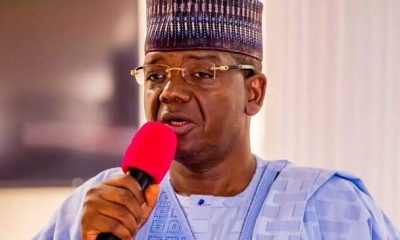
 society5 months ago
society5 months agoRamadan Relief: Matawalle Distributes Over ₦1 Billion to Support 2.5 Million Zamfara Residents
-
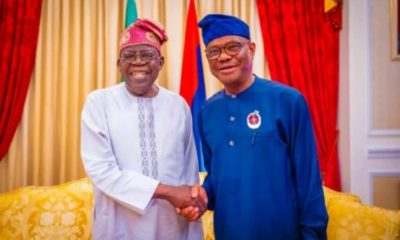
 Politics2 months ago
Politics2 months agoNigeria Is Not His Estate: Wike’s 2,000‑Hectare Scandal Must Shake Us Awake
-
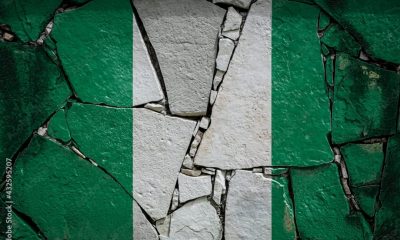
 society4 months ago
society4 months agoBroken Promises and Broken Backs: The ₦70,000 Minimum Wage Law and the Betrayal of Nigerian Workers
-

 society3 months ago
society3 months agoOGUN INVESTS OVER ₦2.25 BILLION TO BOOST AQUACULTURE



